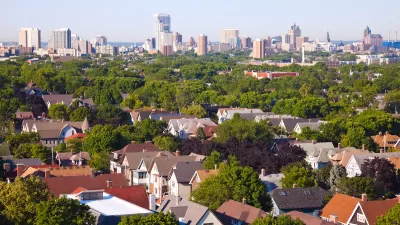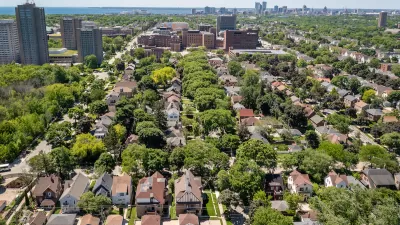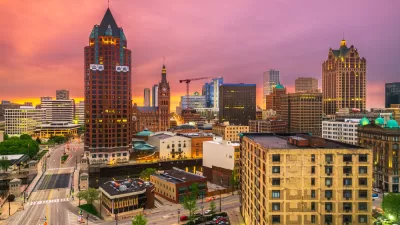Zoning reform will be key to the Milwaukee Mayor Cavalier Johnson’s vision to almost double the city’s population.

Milwaukee Mayor Cavalier Johnson is pitching the idea of growing the city to 1 million residents, almost doubling the city’s population as of the 2020 Census and increasing even above the city’s peak population in 1960.
“In order to achieve the goal, Johnson said he’s trying to put in place policies to attract economic growth and stability in neighborhoods. On the top of that list is updating the city’s zoning code to allow for more density,” writes Evan Casey for Wisconsin Public Radio. “Mayor Johnson said he believes the city can achieve the 1 million goal by changing the zoning code to allow for more density, adding economic opportunities and increasing public transit options.”
Mayor Johnson also points to the forthcoming arrival of the East-West Bus Rapid Transit as an additional enticement for new residents. Unlike many cities around the country, Milwaukee can also point to a recent influx of companies locating in the city’s downtown area. “Northwestern Mutual announced a recent plan to move nearly 2,000 employees back to downtown Milwaukee in the next three to five years, redesigning an older building in the process. Other companies, including Kohl's, SoftwareONE, Miller Electric Mfg, the American Heart Association, CBRE Group, Inc. and Potawatomi Business Development Corp. have also announced similar plans,” explains Casey.
Potential residents are also looking to Milwaukee. A recent Redfin study that found Milwaukee as the leading destination for Chicago residents looking to relocate, as reported in a paywalled article published by the Milwaukee Business Journal.
Casey credits white flight with reversing the city’s population growth in the 1960s. The city’s peak population reached 741,324 in 1960, becoming the 11th largest city in the nation. With 577,222 residents in 2020, the city is now ranked 30th in population in the country. “But even as the population in the city has declined, the total gross domestic product from the greater Milwaukee area has continued to rise,” according to Casey. The city was also one of a few “Rust Belt” cities to grow in population between 2000 and 2010.
FULL STORY: Milwaukee's mayor wants to reverse decades of population decline to get city to 1M residents

Planetizen Federal Action Tracker
A weekly monitor of how Trump’s orders and actions are impacting planners and planning in America.

Maui's Vacation Rental Debate Turns Ugly
Verbal attacks, misinformation campaigns and fistfights plague a high-stakes debate to convert thousands of vacation rentals into long-term housing.

Restaurant Patios Were a Pandemic Win — Why Were They so Hard to Keep?
Social distancing requirements and changes in travel patterns prompted cities to pilot new uses for street and sidewalk space. Then it got complicated.

In California Battle of Housing vs. Environment, Housing Just Won
A new state law significantly limits the power of CEQA, an environmental review law that served as a powerful tool for blocking new development.

Boulder Eliminates Parking Minimums Citywide
Officials estimate the cost of building a single underground parking space at up to $100,000.

Orange County, Florida Adopts Largest US “Sprawl Repair” Code
The ‘Orange Code’ seeks to rectify decades of sprawl-inducing, car-oriented development.
Urban Design for Planners 1: Software Tools
This six-course series explores essential urban design concepts using open source software and equips planners with the tools they need to participate fully in the urban design process.
Planning for Universal Design
Learn the tools for implementing Universal Design in planning regulations.
Heyer Gruel & Associates PA
JM Goldson LLC
Custer County Colorado
City of Camden Redevelopment Agency
City of Astoria
Transportation Research & Education Center (TREC) at Portland State University
Jefferson Parish Government
Camden Redevelopment Agency
City of Claremont





























